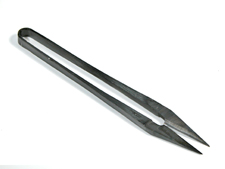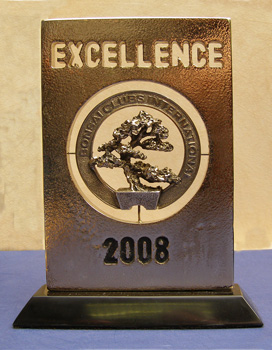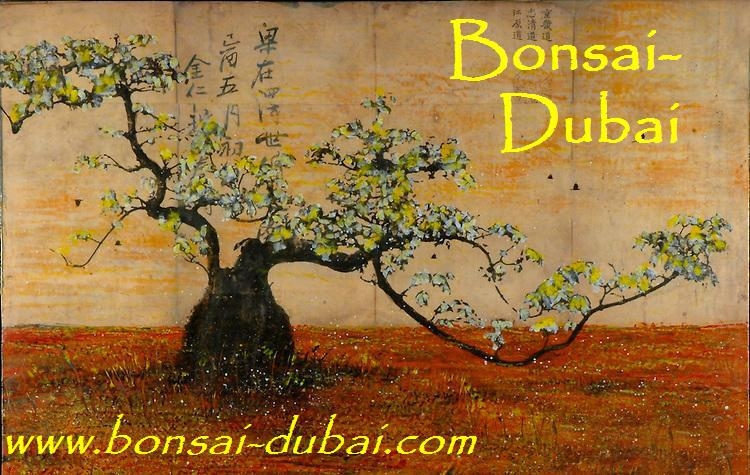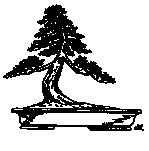Bonsai Tools
Bonsai tools are specialized tools which have evolved over hundreds of years with the art of bonsai. Good quality tools are made of forged, high-carbon steel to hold a sharp edge and will provide a lifetime of service if used and cared for properly.
Tools used for Pruning:
Leaf Pruners are used to defoliate trees. Their spring loaded action makes it easy to cut off each leaf at its petiole (stem)
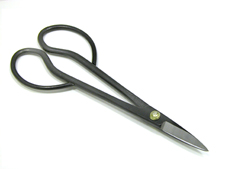
Shears (Light weight) come in various sizes and are used to cut everything from buds and leaves to stout branches and roots. Their long handles allow access to the interior of a tree without disturbing the outer branches.
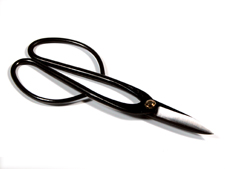
Shears: Medium weight
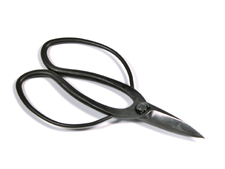
Shears: Heavy weight
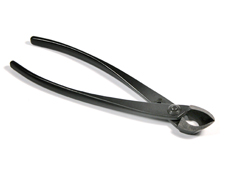
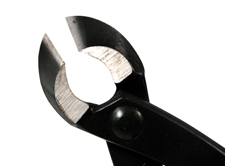
Concave Cutters come in three sizes and are used to cut branches. The angled, concave blade leaves a clean, hollow cut which heals more easily and leaves less of a pruning scar.
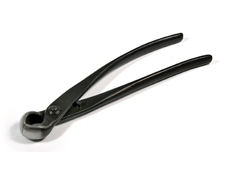
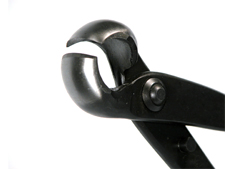
Knob Cutters or Spherical Cutters also come in three sizes and are used to cut branches at their base. These cutters leave a deep, hollow cut allowing the bark to heal with minimal pruning scar.
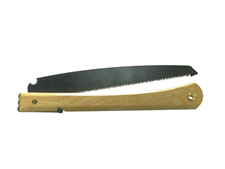
Saws are convenient when branches are too thick for Concave Cutters. Japanese pruning saws cut on the pull stroke for better control.
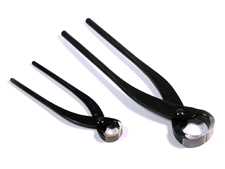
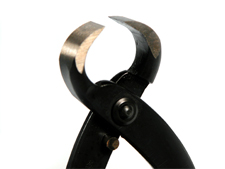
Root Cutters or Splitters come in three sizes and are used primarily to cut tough, fibrous roots, split branches and remove wood.
Tools used for Wiring:
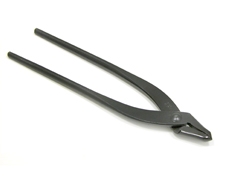
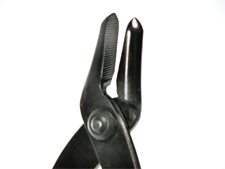
Pliers are used for bending and holding heavy wire when wiring branches. They can also be used to tear deadwood wood on branches when creating a jin.
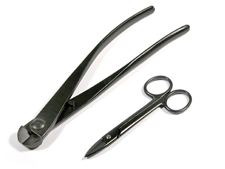
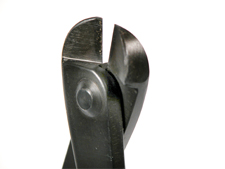
Wire Cutters: small, medium and heavy are used to cut wire from 6mm to 1mm thick. Their special shape allows for the removal of wire from branches without damaging the bark or branch.
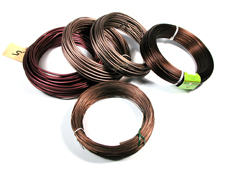
Bonsai Wire, made from anodized aluminum, comes in eight different thicknesses, from 1 mm to 6 mm in diameter. Conifers are usually wired with copper wire.
Tools used for Potting:
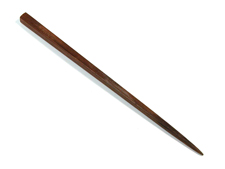
Chopsticks are inexpensive and extremely useful in teasing away soil from the root ball. They are also used to auger soil in between roots when potting a tree so as to leave no air pockets or cavities.

Scythe: The scythe can be used to separate a root bound tree from its container. It can also be used to saw through roots, especially overgrown sod-like root pads.
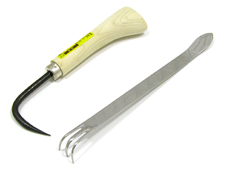
Root Hook and Root Rake are also used to comb out roots. The spatula on the Root Rake can be used to tamp down soil or separate a root-bound tree from its container.
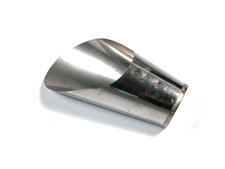
Soil Scoops are a convenient way of adding soil to the container when potting a tree. Their angled spout allow pouring the soil where needed without bumping into the trunk or branches.
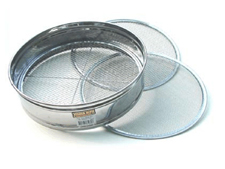
Set of Sieves:
Small (1/16” or 1.5 mm openings) Medium (1/8” or 3 mm openings.) Large (1/4 “ or 6 mm openings). These sieves are used to sift particles of varying sizes to achieve a consistent, coarse soil mix without the fine particles that can compromise the soil mix's porosity and free-draining properties.
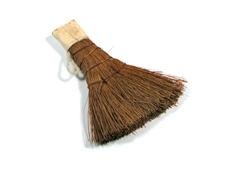
Broom: Use the broom to level and brush away excess potting medium.
Tools used for Carving:
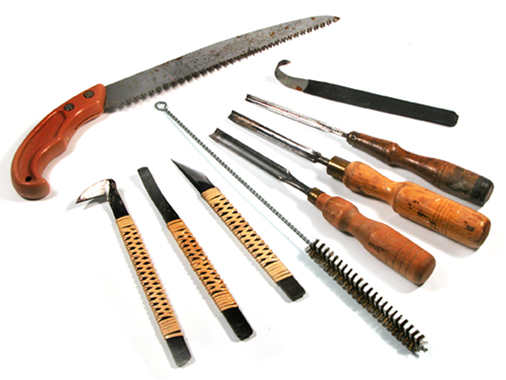
Splitters, Pliers, Knives, Scrappers, Wire Brushes, Gouges, Electric Rotary Grinders
All these tools and more, are used to carve deadwood when creating jin, shari, saba miki and driftwood.
Care and Maintenance of Bonsai Tools
• Examine your tools regularly.
• Don’t use tools for a purpose for which they were not designed.
• Never twist or turn a tools while it is being used.
• Try not to drop your tools on hard surfaces like concrete or stone.
• Don’t use your finely sharpened shears to cut roots that are in the soil. Particles of soil can dull and nick.
• Do not overload a tool. Instead make a series of smaller cuts or usealarger tool.
• Tools should be sharpened by a specialist.
• Clean your tools when finished. Alcohol or turpentine will remove sap.
• Apply a light coating of oil to surfaces and pivot point.
• Store in a dry, clean place where they will not be damaged by contact with each other or other objects.
BCI Education Committee
|
Chen Chang (Chair) China |
|
Sujata Bhat India |
|
David DeGroot USA |
|
Min Hsuan Lo Taiwan |
|
Bhavna Shah India |
|
Enrique Castaño Mexico |
|
Piotr Czerniachowski Poland |
Find BCI bonsai and viewing stone experts for your club’s next event.
BCI Instructors and Teachers are listed by country. All meet the criteria BCI has developed to ensure each instructor or teacher has the knowledge and experience to qualify for a listing in this section.
To be listed as a BCI Instructor or Teacher, refer to our guidelines and if you qualify, use the submission form for your application.
Allow two weeks for your application to be reviewed and your information listed on this website.
BCI Guidelines for Instructors and Teachers
(Guidelines or criteria an individual must meet to be listed)
Submit Your Application (Button linked to a form)
BCI Instructors and Teachers
Bonsai Pots
A bonsai pot is not just any pot! A bonsai pot serves a function beyond merely containing the tree and the potting medium. It is an integral part of the bonsai image, and must complement the tree in much the same way as a frame complements a painting.
Bonsai pots:
-are very beautiful, an art form requiring highly skilled artists.
-are much more shallow than regular plant pots, hence the frequent reference to bonsai ‘trays.’ 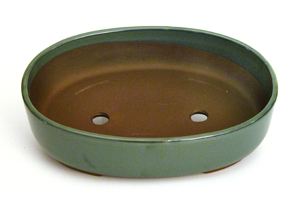
-are stoneware or ceramic, as opposed to the common earthenware flower pots. They have been fired to much higher temperatures, and thus are much more hardy.
-have huge drainage holes. These ‘25-cent-piece’ sized holes must have mesh screening in place over them to prevent the soil from running out the bottom of the pot.
-have feet, which raise the pot bottom from the bonsai bench, allowing draining water to run freely away. Their feet may be plain and straight, or curved and fancy.



Bonsai pots may be an unglazed, rich brown in color, or glazed to soft, subtle colours such as green, grey, blue, cream, or warm white. In shape they may be
round, square, octagonal, oval, or oblong. Their profile may be straight-sided, lipped, flared, or incurved.




A bonsai pot may be as small as a teacup, or even a thimble, or as large as a baby’s bath. Traditional, established guidelines help bonsaiists select the appropriate size, shape and color to best complement each tree style and species.
Pots for cascade and semi-cascade bonsai are, of necessity, much deeper, in order to balance the downward sweep of these two styles.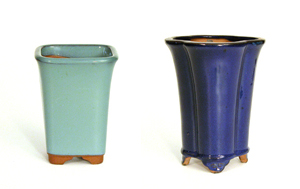
Until bonsai are ready for such fine pots as described here, but after they have been 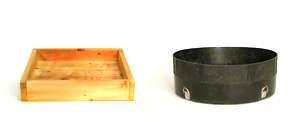
collected from the wild or lifted from the garden, they can be planted into ‘training pots’. These can be as simple as seed trays or even shallow wooden boxes lined with screen, as long as they are free draining. Training pots must be shallow, to encourage the tree roots to develop horizontally.
Beginners should beware of poorly-made pots, especially those with uneven bottoms, hollows in the feet, or carelessly made drain holes. All of these are serious flaws, as water may collect or be prevented from draining freely, causing root rot— one of the most common causes of tree mortality.
|
Bonsai pots:
-have feet, which raise the pot bottom from the bonsai bench, allowing draining water to run freely away. Their feet may be plain and straight, or curved and fancy.    Bonsai pots may be an unglazed, rich brown in color, or glazed to soft, subtle colours such as green, grey, blue, cream, or warm white. In shape they may be round, square, octagonal, oval, or oblong. Their profile may be straight-sided, lipped, flared, or incurved.
A bonsai pot may be as small as a teacup, or even a thimble, or as large as a baby’s bath. Traditional,established guidelines help bonsaiists select the appropriate size, shape and color to best complementeach tree style and species.
Pots for cascade and semi-cascade bonsai are, of necessity, much deeper, in order to balance the downward sweep of these two styles.
Until bonsai are ready for such fine pots as described here, but after they have been collected from the wild or lifted from the garden, they can be planted into ‘training pots’. These can be as simple as seed trays or even shallow wooden boxes lined with screen as long as they are free draining. Training pots must be shallow, to encourage the tree roots to develop horizontally.Beginners should beware of poorly-made pots, especially those with uneven bottoms, hollows in the feet, or carelessly made drain holes. All of these are serious flaws, as water may collect or be prevented from draining freely, causing root rot— one of the most common causes of tree mortality. |
A bonsai pot is not just any pot! A bonsai pot serves a function beyond merely containing the tree and the potting medium. It is an integral part of the bonsai image, and must complement the tree in much the same way as a frame complements a painting.
 Bonsai pots
Bonsai pots
Are very beautiful, an art form requiring highly skilled artists.
Are much more shallow than regular plant pots, hence the frequent reference to bonsai ‘trays.’
Are stoneware or ceramic, as opposed to the common earthenware flower pots. They have been fired to much higher temperatures, and thus are much more hardy.
Have huge drainage holes. These ‘25-cent-piece’ sized holes must have mesh screening in place over them to prevent the soil from running out the bottom of the pot.
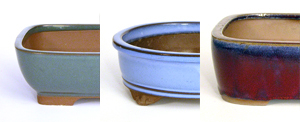 Have feet
Have feet
which raise the pot bottom from the bonsai bench, allowing draining water to run freely away. Their feet may be plain and straight, or curved and fancy.
May be an unglazed, rich brown in color
 Bonsai pots may be an unglazed, rich brown in color, or glazed to soft, subtle colours such as green, grey, blue, cream, or warm white. In shape they may be round, square, octagonal, oval, or oblong. Their profile may be straight-sided, lipped, flared, or incurved.
Bonsai pots may be an unglazed, rich brown in color, or glazed to soft, subtle colours such as green, grey, blue, cream, or warm white. In shape they may be round, square, octagonal, oval, or oblong. Their profile may be straight-sided, lipped, flared, or incurved.
Small as a teacup
 A bonsai pot may be as small as a teacup, or even a thimble, or as large as a baby’s bath. Traditional, established guidelines help bonsaiists select the appropriate size, shape and color to best complement each tree style and species.
A bonsai pot may be as small as a teacup, or even a thimble, or as large as a baby’s bath. Traditional, established guidelines help bonsaiists select the appropriate size, shape and color to best complement each tree style and species.

Balance the downward sweep of cascades
Pots for cascade and semi-cascade bonsai are, of necessity, much deeper, in order to balance the downward sweep of these two styles.
 Training pots must be shallow
Training pots must be shallow
Until bonsai are ready for such fine pots as described here, but after they have been collected from the wild or lifted from the garden, they can be planted into ‘training pots’. These can be as simple as seed trays or even shallow wooden boxes lined with screen, as long as they are free draining.
Training pots must be shallow, to encourage the tree roots to develop horizontally.
Beginners should beware of poorly-made pots, especially those with uneven bottoms, hollows in the feet, or carelessly made drain holes. All of these are serious flaws, as water may collect or be prevented from draining freely, causing root rot— one of the most common causes of tree mortality.
|
|
Choose a Categorgy
Clubs/Societies/AssociationsArtists/StudiosResources |
If you want to add a link to your web site on this page click on this link and complete the form.
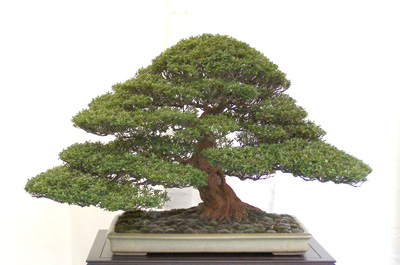
Fabio Mantovani - Italy - 2008 BCI convention in Italy
Azelea Rhododendron Satsuki - "Kinsai"BONSAI ORGANIZATIONS
- Albek Bonsai Studio
- American Bonsai Society
- artisansbonsai.com
- Asociación Cultural Fuji Kyookai Bonsai
- Association of Australian Bonsai Clubs Ltd (AABC)
- Bay Island Bonsai
- Bonsai in Asia Guide Book
Bonsai-Dubai
- Bonsai Societies of Florida (Florida, USA)
- Bonsai Sul
- British National Bonsai Collection
- Danish Bonsai Society
- European Bonsai Association
- Federation of British Bonsai Societies
- German Bonsai Society
- Golden State Bonsai Federation (California, USA)
- Internet Bonsai Club (See more information at end of this listing to subscribe)
- Latin America Bonsai Federation (FELAB)
- Mid America Bonsai Alliance
- MidAtlantic Bonsai Societies
- Middle-East & North Africa Bonsai Society
- National Bonsai Foundation (District of Columbia, USA)
- Netherland Bonsai Information (Brian Smith's page of Dutch Bonsai Information
- Nippon Bonsai Association (NBA entry for a website for children on Japanese culture)
- Potomac Bonsai Association
- USDA Hardiness Zone Map
- World Bonsai Friendship Federation
INTERNET BONSAI CLUB
INTERESTING SITES
Agriscape - A Guide to Agriculture
Angkarb Thailand Bonsai
Association of British Bonsai Artists
Bonsai Empire
Bonsai 4Me.com
Bonsai Adventures of Ernie Kuo
A photo gallery of bonsai specimens by Ernie Kuo
Bonsai in Asia Guide Book
Bonsai for Beginners
Bonsai Primer
Bonsai Study Group
BonsaiWeb.com
Brian's Guide to Bonsai in Europe
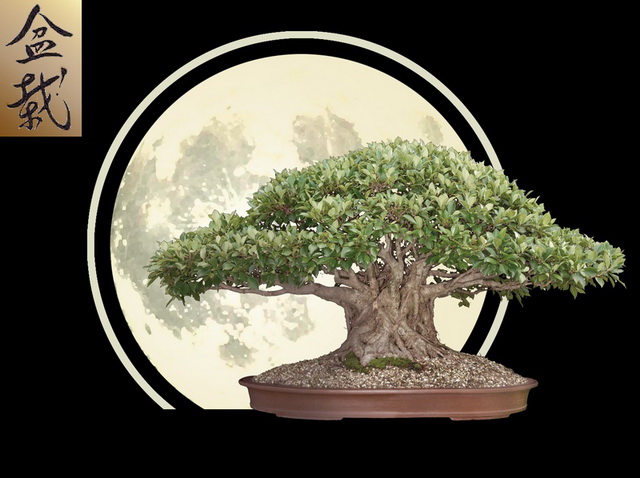
http://bonsaieneltropico.com/
Correiadasilva Bonsai
http://bonsai.correiadasilva.net/
Dan's Bonsai Site
eBonsai.com
Fuku Bonsai (Hawaii)
Integrated Pest Management Information
Italian Bonsai Dream
Man Lung Penjing
Meislik's Bonsai Information
Michi Online
Sennin Foundation Center for Japanese Cultural Arts
Shohin-bonsai Europe
Tedy Boy Bonsai Studio
www.tedyboybonsai.blogspot.com
Tropical Bonsai.com
Viewing Stone Association of North America (VSANA)
VSANA serves as a center for people to study, learn, and promote Asian stone appreciation beginning with China where the practice originated. We are devoted to understanding Chinese and other Asian precepts and principles relating to all aspects of appreciating natural stones as artistic objects. VSANA will attempt to disseminate this information to English speaking audiences worldwide utilizing meetings, exhibits, lectures, and various electronic media including this web site.
An advisory board of experts and leaders is assisting VSANA in maintaining accurate, up-to-date information about Chinese stone appreciation and to promote traditional and modern views about these stones. Featured articles, book reviews, historical information, news about current events and exhibitions in China and other information will be published on our web site, and typically updated every month.
World of Mini-Bonsai by Kyosuke Gun and Sachiko Iwasaki
TAKE CARE OF YOUR TOOLS!
by Bill Sullivan
The following electronic reprint was posted to the Internet by the Golden State Bonsai Federation, a federation of over 60 Bonsai clubs in the state of California. It was posted by Michael Greenstein [greenste@AOL.com].
Before beginning to recondition or to sharpen your tools, you should have on hand:
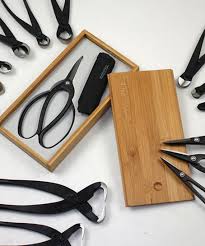
Cleaners:
1. Soap and water, rubbing alcohol, Clorox, WD-40, and/or lighter fluid.
2. Rust eraser.
3. Wire brushes (hand and power).
4. Steel wool.
5. Fine emery cloth, wet/dry.
Sharpeners:
1. Water or oil stones(coarse and fine). Water stones need to be well soaked.
You will need both flat and round stones.
2. Honer (porcelain knob and tube insulators are great).
3. Power brush and grinder.
4. Hand files (coarse and fine).
5. Vise
Reconditioners:
1. Ball peen hammer and anvil (or piece of heavy metal).
2. Naval Jelly (follow instructions; use mask and safety glasses).
3. Gun Blue (Minute Man cold chemical; follow instruction).
4. Plastic Dip (PDI).
5. Light oil (Three-In-One).
If you clean your tools after each use, they should never need major work. Tools should be cleaned thoroughly with soap and water or rubbing alcohol after each use, and then dried carefully. A Clorox mix can also be used to clean and sterilize. WD 40, (a rust preventative oil) and lighter fluid are good for removing the "gook" from the cutting surfaces of the tools left by pines, ficus, and other plants which exude a sticky sap. Always dry your tools and oil lightly after each cleaning.
Sharpen and Repair
When it becomes necessary to sharpen or repair your tools due to use or misuse, then by following the instructions given, you can return the tool to a serviceable condition. There is no sense in massacring your five-hundred dollar tree with tools that are not in good condition.
The appearance of a rusty tool can be materially improved by the use of a "Rust Eraser." This product will remove rust and polish up your tools after initial heavy cleaning. This is a new, but highly effective device which may be purchased through several dealers. Naval Jelly is used for the removal of heavy rust, and will also provide an element of protection. Following the manufacturer's instruction, it is wise to use gloves, mask and safety glasses. Be sure any residue is carefully washed and rinsed away. For the removal of especially heavy rust, sandpaper or wire brushes should be used. Steel wool is effective, but hard on the hands. Power wire brushes are great for both cleaning and polishing. I cannot stress too strongly that safety glasses and masks should be worn when using caustic materials or power tools.
Study your tools carefully before doing any sharpening. There are bypass blades, anvil, beveled, and blades that meet, but are beveled inside and out. Stainless steel tools are difficult to sharpen, because they are so hard. Be sure to check the manufacturer's angle of any tool before you start. That angle is the one you want to maintain.
Sharpening stones need to be smooth and flat when used. A worn stone with curves or waves is worthless. A wooden block with raised ends will elevate your stone, hold it firmly, and save your knuckles. A "stop" should be secure to one end of the block to keep the stone from sliding off the work bench. Oil and water stones both do the same thing, remove metal in such a way as to provide a sharp cutting edge. Heavy work, such as removing a nick in the blade, should be done with coarse or medium stones, and the finishing touches can be done with the fine stone. A tungaloy carbide sharpener can be used, but this cuts away excessive amounts of the metal, and should only be used sparingly. Be sure to clean stones after each use.
In sharpening bypass blades, you are removing metal from the cutting edge, so use pressure only on the forward strike, beveled side down against the stone. Do not attempt to correct the "overbite" of concave tools! With anvil blades, sharpen only the top blade, which is beveled on both sides. Use the same procedure as: before, but remember to do both sides. Concave cutters are sharpened on the inside only. Lightly roll the outer concave surfaces against the stone, one side at a time. The interior surfaces should be sharpened with a round or half-round stone, and finished with a honer. The honer does not sharpen; it just smoothes the surfaces. Tools with blades that meet, like root pruners, may need to be adjusted for proper closure by filing the stop pin just enough to allow the blades to touch. Wire cutters need to be sharpened on both sides, but because the blade movement is so restricted, it is best to use a fine file. Use the file cautiously. If you remove too much metal, they will not close properly.
Power grinders should only be used for "heavy" removal of metal, although the experienced craftsman could use it for fine work. Be sure the tools you are sharpening do not get hot! Heat removes the temper, rendering a tool "soft" and incapable of holding an edge. A vise is essential for holding most curved-bladed bonsai tools while working on those angles. Left-handed tools are hard to find and require special care.
If you need to adjust the rivet to keep the closing tension tight, it may be tapped lightly with the "peen' side of the hammer. For best results, the tool should be held firmly against an anvil or piece of heavy metal. If the closing joint is too tight, work an abrasive material, like Liquid Wrench into the area by moving the handles back and forth.
Reconditioning the metal color
Gun Blue renews the surface look and provides rust protection. It can only be used on areas that have been completely cleaned. Not even a fingerprint can remain. I suggest that cleaning solution be used to decrease the metal before applying the bluing solution. The "blue" can be painted on with a Q-Tip swab, covering the exposed metal parts. Follow the package instructions and avoid skin contact. To give a better "feel" to the tool, the grip area of the handles can be immersed in "plastic dip." Follow the package instructions carefully. After dipping a handle, turn it rapidly up and down, up and down, to keep a glob from forming at the tip. This dip protects the metal, provides a cushioned grip, and (because it comes in at least seven colors), helps in tool identification. Probably no more than two coats of this material is necessary. Use the Gun Blue before you dip the handles.
After cleaning, sharpening and reconditioning tools, they should be oiled lightly. Excess oil should be wiped away. Regularly cleaned and oiled tools will not rust! Who can work in bonsai without getting their tools wet and dirty? Properly cared for and sharpened, your bonsai tools can remain serviceable for decades.
Edited for the Internet by Thomas L. Zane
or
Designing with a Mouse
tzane@cfl.rr.com">tzane@cfl.rr.com
BACKGROUND: Three years ago I attended my second university level six day Residential Bonsai Course Residential Bonsai Course in bonsai with bonsai artist Dan Barton in Bristol, England. A small part of that course was an introduction to styling and restyling bonsai using the computer. I was intrigued but did not retain enough of the information to be able to practice it once I got home. So I decided to have another go at it, along with some other specialized instruction that I requested. In May 2001 a fellow member of our local bonsai society and I spent nearly two weeks at Dan's studying some of the complexities of bonsai aesthetic, visiting some of the spectacular trees featured in Thomas Pakenham's "Meetings with Remarkable Trees", doing a bit of sightseeing (Gloucester Cathedral, Stonehenge, etc.) and participating in a bit of local pub life.
I had requested practical instruction on the creation of "ancient style" of bonsai - bonsai that represent the truly ancient trees of the world. We both wanted practical instruction on virtual styling and restyling of bonsai using a computer. We had taken digital photographs of several of our bonsai which we wanted to use as subjects for virtual restyling. With Dan's guidance we did a virtual restyling of several of the trees, saved the images, brought them home, and am using them to enhance the actual trees.
THE PROCESS: I took digital images of several bonsai, photographing all four sides. In most instances I used a neutral colored background to enhance the tree image. (If a digital camera in not available, color print photographs can be scanned into a computer for subsequent manipulation.) The images were saved on a zip disk and transported to the UK to be used as specimens in the study. The same disk was used to bring the manipulated images back home.
On either an IBM compatible or a Macintosh (my choice), the application program Adobe PhotoShop® is opened and a front view of one of the trees is opened. The original image, now on the screen, is saved with a slightly different name and it is that newly saved image which is used in the manipulation so that you can always come back to the original. One or a combination of effects can be applied to the image.
Remove a Branch? If you have a branch, such as a particular low one on a trunk, or one that appears on the two-dimensional screen to be a bar branch, and you would like to see what the tree would look like if the branch was removed, virtually prune it. Using PhotoShop®, lasso the offending branch and delete it. Fill in the blank area left when you removed part of the image by "rubber stamping" adjacent background into the area. Like it? Maybe I should have left a stump of dead wood. Revert to an earlier step, just before you removed the branch, and this time don't lasso the entire branch, leave a stump, and continue as described above. Now you have a pretty good idea what the tree would look like minus that branch. See an example.
Grow a Branch? Want a branch in a specific place. Using PhotoShop®, copy one of the branches on the tree and manipulate it until you have "grafted" it onto the spot where you think a branch is needed. Too long? Erase some of the tip. Not long enough, use the program to make it "grow" longer. See an example.
Repositioning Branches/Foliage Masses: If you are considering moving a branch, or if during a critique it is recommended that a branch or foliage mass be repositioned, the branch may either be cut and pasted into its new trial position or lines can be drawn to show where they might better be located. See an example.
Restructuring the Branches to Complement the Style: Sometimes the branches are just about where they belong, but the foliage masses are incorrect for the style which is trying to be portrayed. The branches of my old Chinese elm, which I am working into an "ancient" style of bonsai, were too long. An ancient tree is more than a mature tree, it is a mature tree which is now on the decline. As Dan Barton said, it is slowly returning to the earth - its trunk is rotting, branches are falling off and branches are shortening and are displaying reduced amounts of foliage. See an example.
Total Restyling: There are times when you might want to consider totally restyling a tree. This is a drastic thing to do and should be approached carefully. By using PhotoShop® to remove all offending branches and to add new branches, you can see a fair representation of what would happen. See an example.
THE RESULT: Styling, restyling and critiquing bonsai using the computer provides another tool for the bonsai artist. You can perform the "operation" on your own trees, or on images of trees sent to you by a friend asking for advice. While I used Adobe PhotoShop®, I suspect most drawing programs will permit you to do most of what I discussed. If you are doing a critique for a friend, only you need to have the drawing program, your friend needs only to be able to open and view the graphic you provide.
What is Bonsai
Bonsai (pronounced bone-sigh) is an ancient oriental horticultural art form. The word Bonsai literally means, in both Chinese and in the Japanese language, tree-in- a-pot. Originally developed in the Orient almost 2000 years ago, today the sublime art of bonsai is practiced throughout the world. Shape-harmony-proportion-scale are all weighed carefully as art, and the human hand combines this in a common cause with nature.
A tree planted in a small pot is not a bonsai until it has been pruned, shaped, and trained into the desired shape. Bonsai are kept small by careful control of the plant's growing conditions. Only branches important to the bonsai's overall design are allowed to remain and unwanted growth is pruned away. Roots are confined to a pot and are periodically clipped. Bonsai may have a stylized or an exaggerated form ... but, as found in nature. The appearance of old age of a plant is much prized and bonsai may live to be hundreds of years old. The living bonsai will change from season to season and from year to year requiring pruning and training throughout it's lifetime ... and as time goes on it will become more and more beautiful.
It is impossible to write a simple set of care rules. Every species of plant has it's own special needs. Each location and environment is different too, and have to be considered. Therefore it is important, when starting in bonsai, to read all you can on the art. Take advantage of your local bonsai club.
BASIC CARE OF BONSAI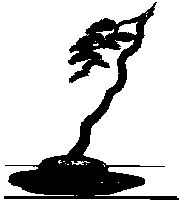
WATERING
More bonsai are lost due to improper watering than from all other causes combined. The length of time between watering can vary quite a bit depending on conditions such as humidify, soil moisture retention, weather conditions, and size of pot. Bonsai usually need to be watered every day or two. The best time to water is early in the day or late in the afternoon at the same time every day. A through watering is accomplished when excess water runs out of the drainage holes in the bottom of the pot, BUT ... too much water can be just as bad as too little water. In general the soil should be moist, not soaking wet, and not dry
FERTILIZING
Feedings vary from plant to plant (such as flowering plants have different requirements than the junipers). A water-soluble fertilizer is usually applied every 2 to 4 weeks during the growing season, in a half-strength solution. Miracle-Gro or Miracid are commonly used, but check label directions for your tree. DO NOT FEED right after repotting (wait for 3-4 weeks). Don't feed if the tree is in a sicken condition. Premoisten the plant soil first. Never fertilizer a very dry bonsai.
REPOTTING
A bonsai must periodically be repotted to supply a pot-bound root system with fresh soil. It is also necessary to keep the root system in balance with the top growth. Most require repotting every two or three years. This depends on the growth of the tree and also on the size of the pot. This should be done in the early spring. Do not fertilize for 3-4 weeks after repotting. Do not let the roots go dry while repotting. Water well when finished.
INSECTS & DISEASE
A bonsai is nothing more than a miniature version of a normal plant, therefore it can be treated with commonly found insecticides and fungicides according to directions on the package. Insects such as aphids, spider mites, scale, and root aphids are a common problem corrected by sprays, soapy rinse, or a systemic.
TRIMMING PRUNING AND TRAINING
Trimming and pruning are the means by which a bonsai is kept miniature. This involves the systematic removal of vigorous growth in the spring. It is important however, to understand that for the health of the tree one should never remove all the new growth at one time. The roots are trimmed and so is the foliage on the plant. The tree is wired to assist in getting branches to grow in a specific position and to enhance the look of the tree. The wire is removed after 6 months. Usually the branch should then stay in that position on it's own. Wire should be carefully cut from the branches. Do not unwind wires as this could break the branch. Trim branches to expose the trunk and to shape the tree into the look you want. Two goals in bonsai are to make young trees look older by thickening the trunk and the positioning of the branches, and to find enjoyment in Nature.
INDOOR BONSAI
There are many varieties of plants that do well as an indoor bonsai such as ficus, aralia, azalea norfolk pine, serissa, gardenia, or boxwood. Note that these are all woody-stemmed plants and can have their limbs wired to direct the growth. Tropical and subtropical varieties can not tolerate tempers below 40 - 50 degrees F. These plants can be left outside when the temperatures stay above this. Light inside the house should be by filtered sunlight from an east, south, or west window. Grow lights 12 hours per day work well. Outside in summer place in partial shade
OUTDOOR BONSAI
There is a wide choice of trees for outside bonsai. The winter dormant period is essential to the general good health of a bonsai. In northern climates winter protection from freeze-drying winds is necessary. Trees should be kept in anunheated area. An unheated garage, shed, breezeway, or cold frame can provide this. Check with your bonsai club for other ways. Check the root system for moisture and water as necessary while in winter storage. Unless the root ball is frozen they will need to be watered every week or so. In the summer water more often as weather conditions demand. Never let the tree go dry but do not keep it soaked either. Some of the trees suitable for outdoor bonsai are, junipers, maples, elms, pines, ginkgo, hawthorn, and flowering crab apple.
CREDITS
This introduction to the art of bonsai was written by Connie Todd and has been provided through the courtesy of The Iowa Bonsai Association, a non-profit organization devoted to the art and study of bonsai. The Iowa Bonsai Association provides its members with programs and workshops relating to bonsai and the horticultural species adaptable to this art. The illustrations are by Norman Haddrick, a bonsai grower and artist living in Canada.

